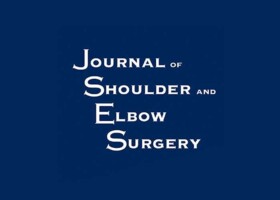
Authors:
Ernat JJ, Rakowski DR, Hanson JA, Casp A, Lee S, Peebles AM, Horan MP, Provencher MT, Millett PJ
Abstract:
Hypothesis:
The purpose of this study was to report return to sport, patient-reported outcomes (PROs), subjective outcomes, and complications or failures in patients who underwent open Latarjet surgery.
Methods:
Patients who underwent open Latarjet surgery performed by 2 fellowship-trained surgeons between August 2006 and November 2018 were included. Prospectively collected data were reviewed. Recurrent instability and revision surgical procedures were recorded. Subjective outcomes included return to sport and fear of reinjury or activity modification as a result of patients' instability history. PROs included the American Shoulder and Elbow Surgeons (ASES) score, Short Form 12 Physical Component Summary score, Single Assessment Numeric Evaluation score, Quick Disabilities of the Arm, Shoulder and Hand score, and satisfaction. Age, sex, sports participation, pain, primary vs. revision surgery (prior failed arthroscopic or open Bankart repair), dislocation number, glenoid bone loss, glenoid track concept, and projected glenoid track were evaluated. Failure was defined as an ASES score <70, recurrent dislocation, or revision instability surgery.
Results:
A total of 126 shoulders (125 patients) met the inclusion criteria, with a mean age of 28.1 years (range, 15-57 years). Of 126 shoulders, 7 (5.5%) underwent additional procedures prior to final follow-up and were excluded from outcome analyses; failure occurred in 6 of these shoulders. Mean follow-up data at 3.7 years (range, 2-9.3 years) were attained in 86.6% of patients (103 of 119). All PROs significantly improved from preoperative baseline (ASES score, from 69.7 to 90.2; Single Assessment Numeric Evaluation score, from 55.8 to 85.9; and Quick Disabilities of the Arm, Shoulder and Hand score, from 28.4 to 10.5). PROs did not differ based on sex, sports participation type, dislocation with or without sports, primary vs. revision procedure, and preoperative dislocation number. No correlations existed between PROs and age, glenoid bone loss, or number of previous surgical procedures. On-track lesions (50 of 105, 47.6%) and projected on-track lesions (90 of 105, 85.7%) correlated with better patient satisfaction but not PROs. Despite not having recurrences, 63 of 99 patients (63.6%) reported activity modifications and 44 of 99 patients (44.4%) feared reinjury. These groups had statistically worse PROs, although the minimal clinically important difference was not met. Return to sport was reported by 97% of patients (86 of 89), with 74% (66 of 89) returning at the same level or slightly below the preinjury level. Revision stabilization surgery was required 6 of 126 cases (4.8%), and 6 of 103 shoulders (5.8%) had ASES scores <70.
Conclusion:
The open Latarjet procedure led to significant improvements in all PROs, and overall, 97% of patients returned to sport. Fear of reinjury and activity modifications were common after open Latarjet procedures but did not appear to affect clinical outcomes. On-track and projected on-track measurements correlated with better patient satisfaction but not improved PROs.
You may request a copy of the study: High Rate of Return to Sport and Excellent Patient Reported Outcomes After an Open Latarjet Procedure
